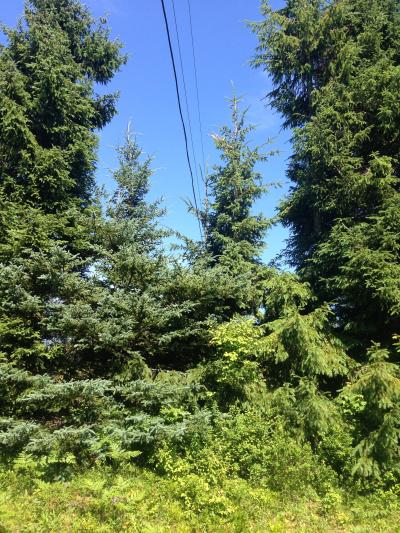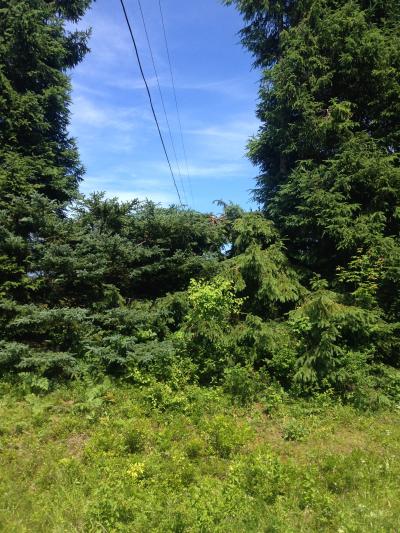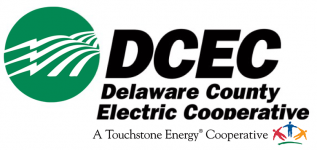The Cooperative uses a combination of best practices collectively known as Integrated Vegetation Management. The Cooperative’s methods include trimming of tree canopy with chain saws, clearing the ground within the Right-of-Way (ROW) with chain saws or mowers, targeted low-volume application of herbicides to prevent re-growth, removal of danger trees outside the ROW, removal of topped trees within members’ yards, and removal of waste created by the trimming of trees and clearing of brush. For the last 16 years, the Cooperative has maintained our ROW on an 8-year cycle:
Year 1 – The ROW canopy is trimmed and the ground within the ROW is cleared of all undesirable species by means of chain saws or mowers. Undesirable species are those species whose mature size would interfere with the operations and maintenance of the electric lines. Tree Crew members remove any wood waste that is created within the member’s landscaped and maintained areas of their property. Wood waste is windrowed along the edges of the ROW in areas outside of the member’s landscaped and maintained yard. ROW clearing is performed according to the Cooperative’s ROW specifications. During year 1 of the cycle, the Cooperative’s Tree Crew members also apply herbicide to cut stumps using a method called “stump treatment.”
Year 2 – Any regrowth of undesirable species on the floor of the ROW are targeted with low-volume foliar herbicide application. Targeted foliar application means that the Cooperative’s employee walks through the ROW with a backpack containing herbicide and sprays the leaves of just the undesirable species. Desirable species such as grasses, low-growing species such as goldenrod, milkweed, and ferns are not treated with herbicide. Those desirable species are left to prosper in the ROW.
Years 3 – 8 – The ROW is monitored for problem conditions and specific areas are re-visited by the crews as necessary to deal with problems such as danger trees and topped trees.
Danger Trees – Danger trees are trees outside of the ROW that present a clear and present danger to the safety and reliability of the Cooperative’s primary electric distribution system. Danger trees are often dead or dying trees that are leaning toward the Cooperative’s primary lines and are likely to come down on the lines. The Cooperative receives frequent requests from members to remove trees that are a danger to the member’s house or other assets owned by the member. The Cooperative cannot remove such trees, but the Cooperative will come to the property and temporarily remove the member’s service wire if doing so will aid the member or the member’s contractor to safely remove a tree.
Topped Trees – In some instances, yard trees that are growing within the ROW present a threat to human safety or the reliability of the electric system. In such cases, the Cooperative prefers to completely remove such trees. If the member prefers, the Cooperative will “top” a tree at least 8 feet below the lowest electrical conductor. The member, using qualified contractors as appropriate, must then take responsibility to maintain that topped tree at a height that never comes within 4 feet of the lowest electrical conductor. If the tree ever grows within 4 feet of the lowest electrical conductor, the Cooperative must completely remove the tree to protect the safety and reliability of the electric system.

|

|
Trimming Service Wires – The Cooperative will trim trees away from a member’s service wire, upon member request. Tree Crew members will trim trees to create an 18-inch radius around the member’s service wire. If additional trimming near the service wire is desired by the member, the member or the member’s contractor may perform the work at the member’s cost. The Cooperative will, at no cost to the member, come to the member’s home and temporarily remove the service wire to allow for safe work practices by the member or his qualified contractor, as appropriate.
Clearing New ROW for Line Extensions – New ROW is generally cleared by the Cooperative’s Tree Crew in order to comply with the Cooperative’s ROW Specifications. Members are permitted to clear their own ROW for a line extension, but members must also comply with the Cooperative’s ROW Specifications.
DCEC Tree Planting Guide
Vegetation Management
Vegetation Management Practices
Herbicides Used in Vegetation Management
Vegetation Management Equipment
Vegetation Management Member Notifications
Vegetation Management Investment of Time and Dollars
Member Roles in Vegetation Management
Coming Soon...Vegetation Management Maps & History
